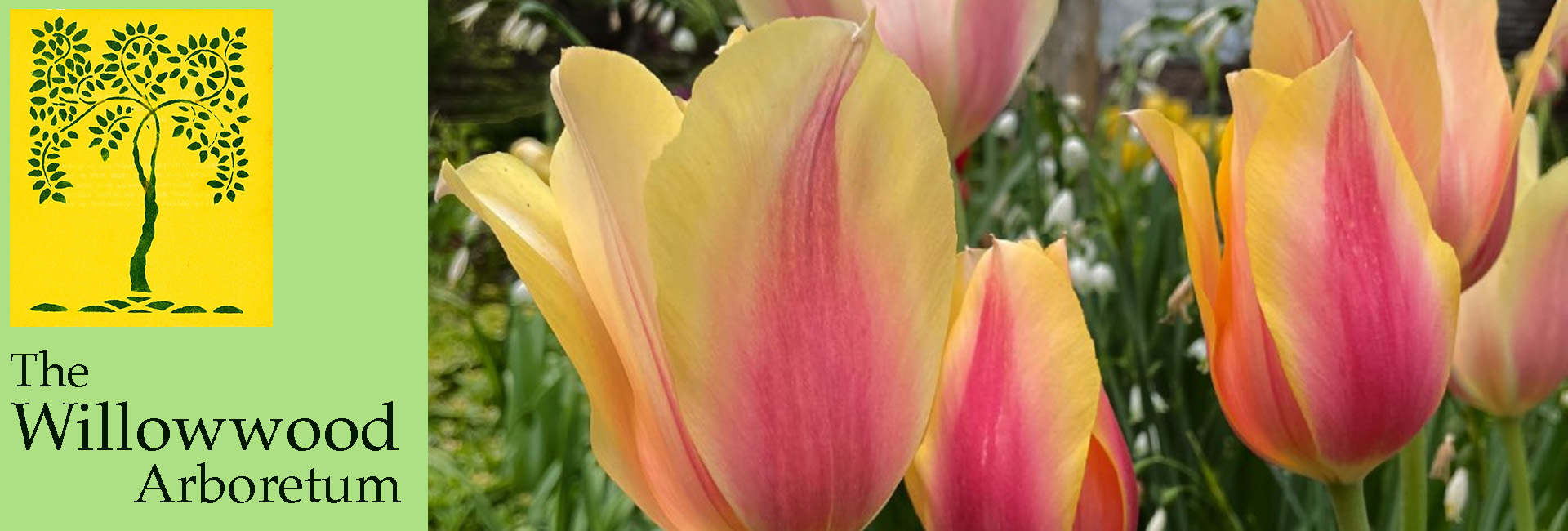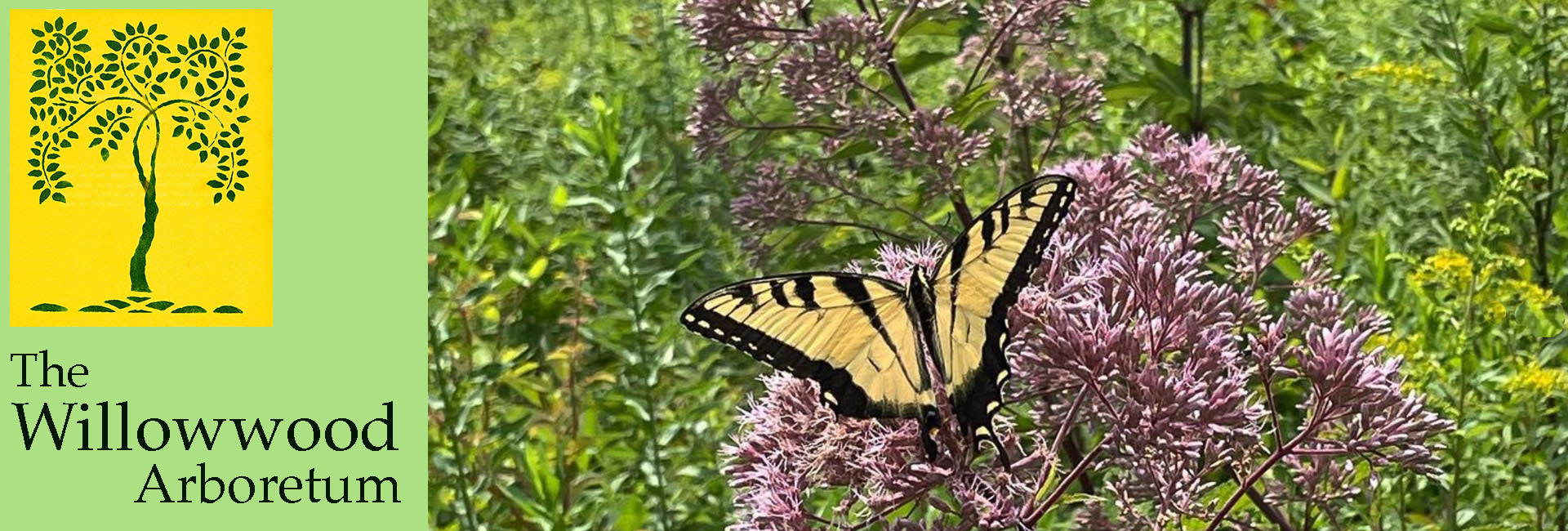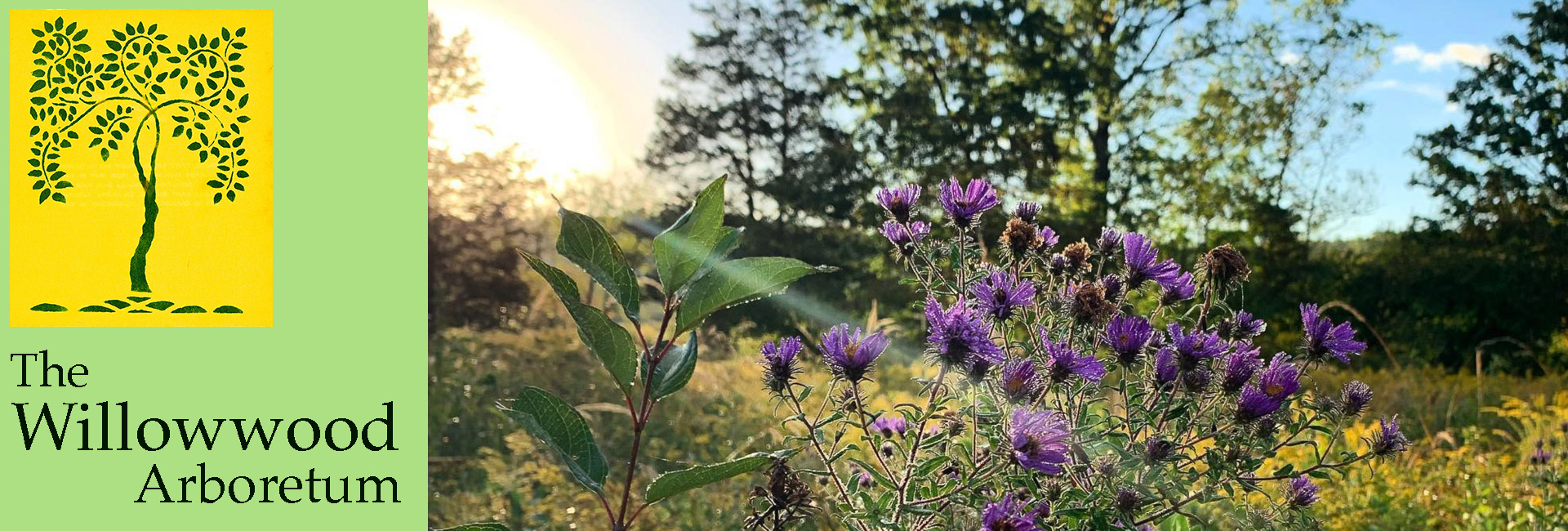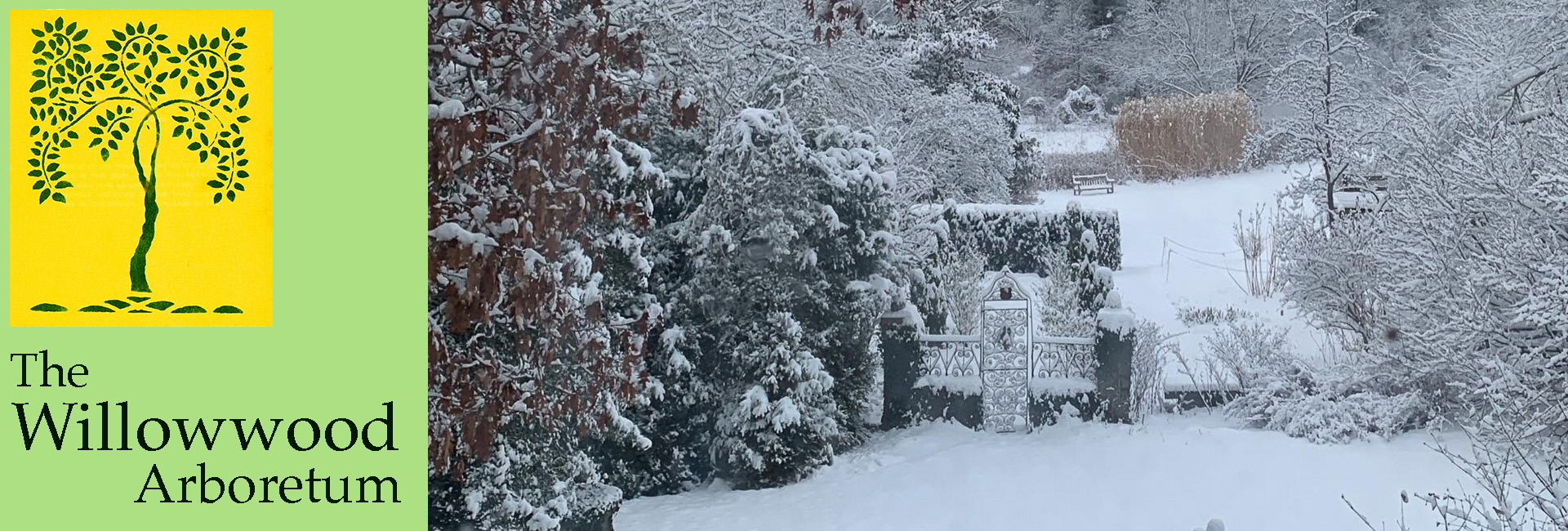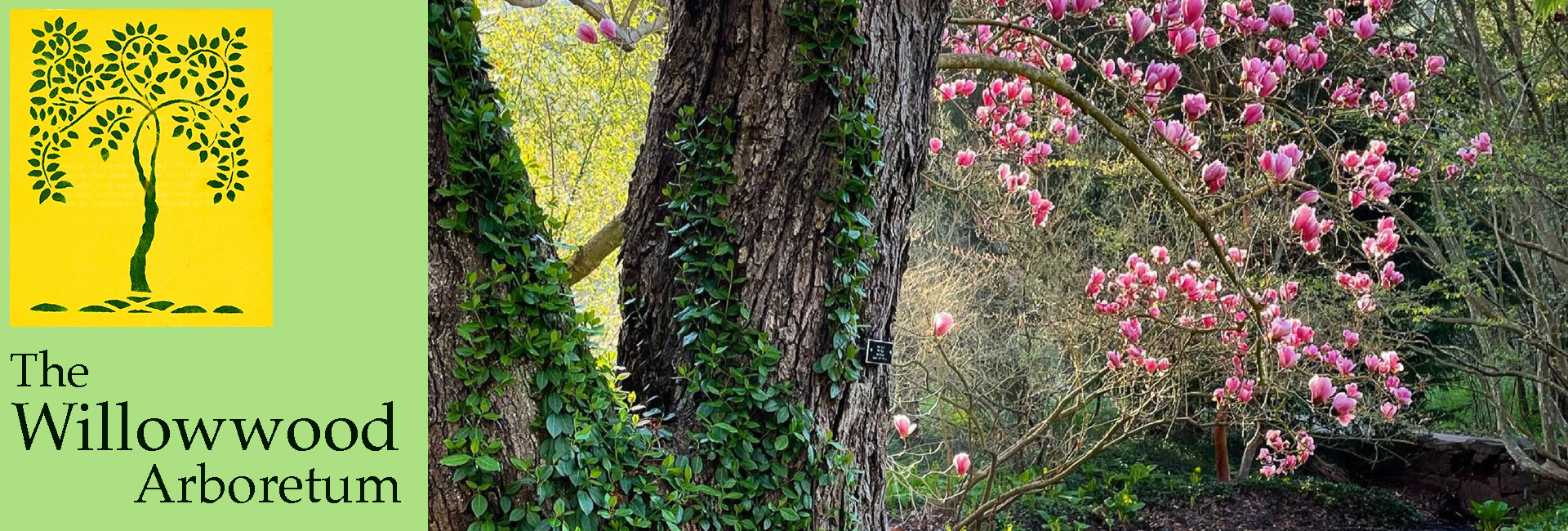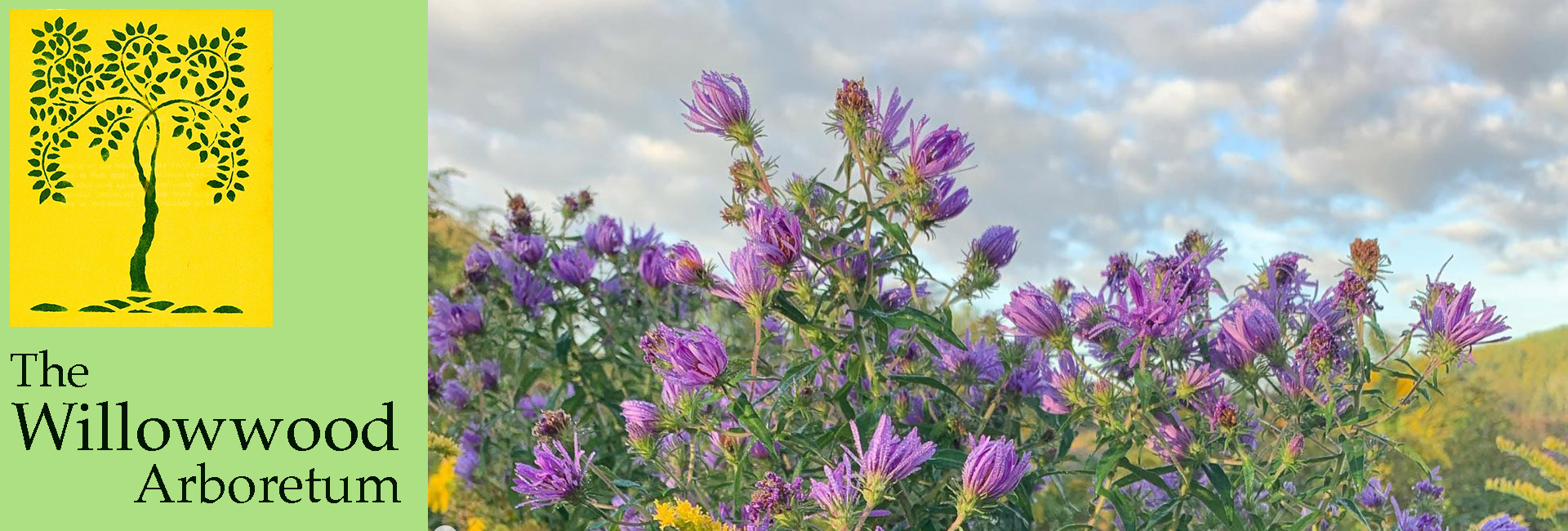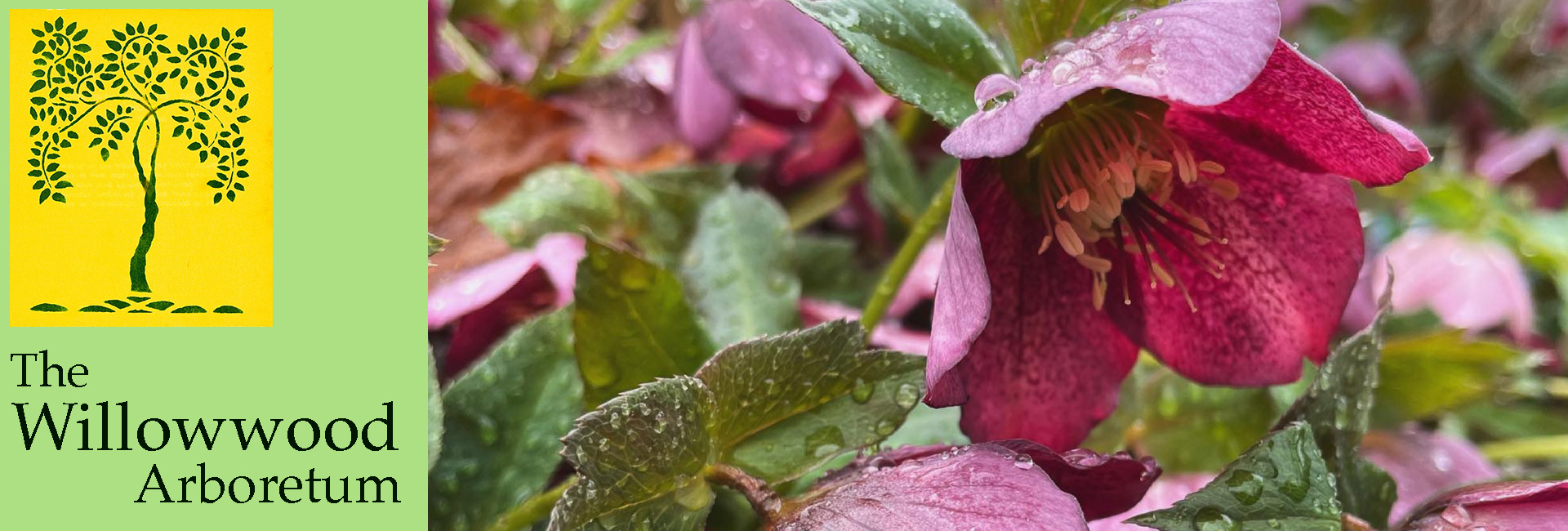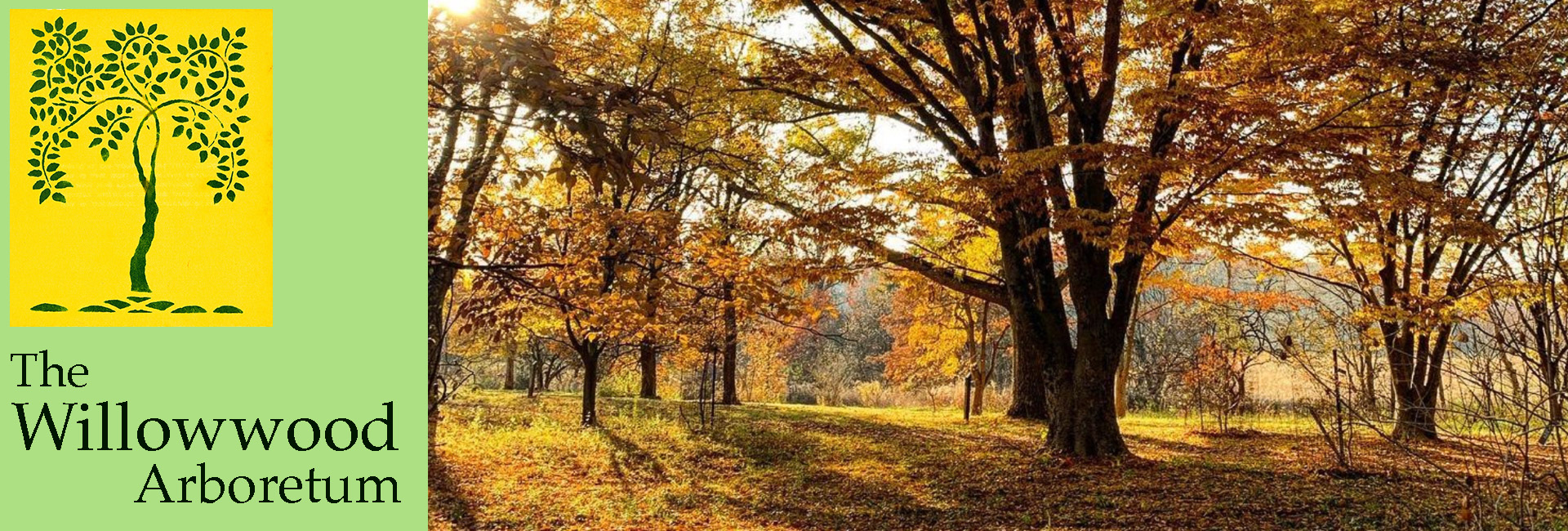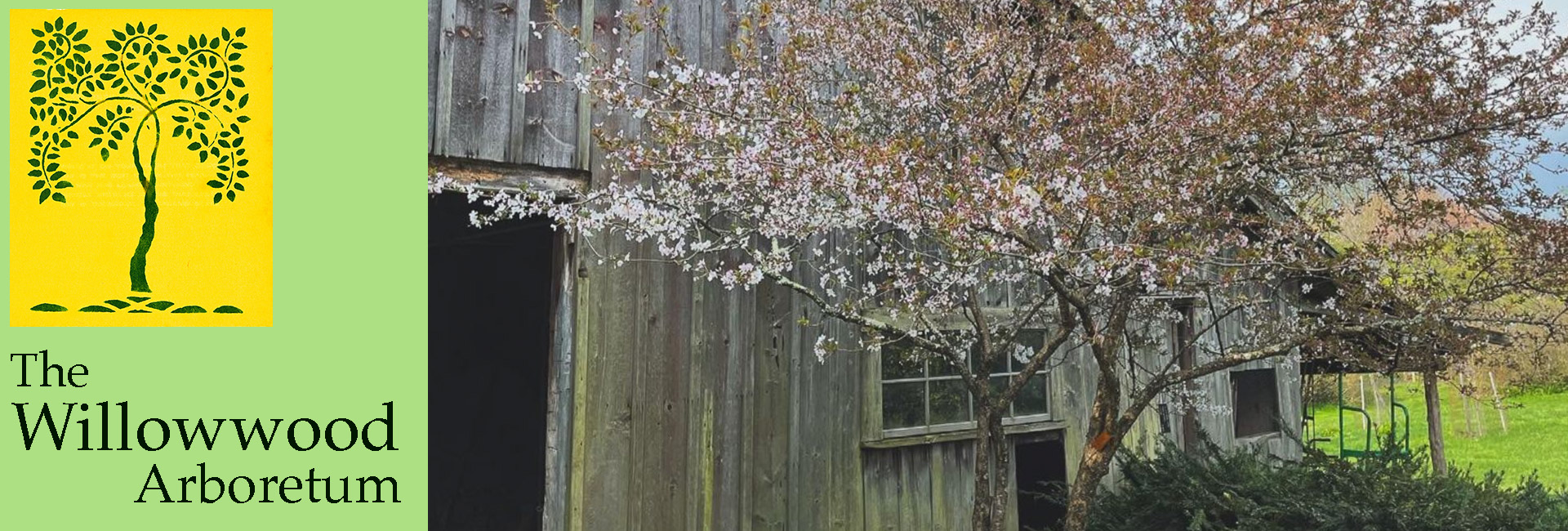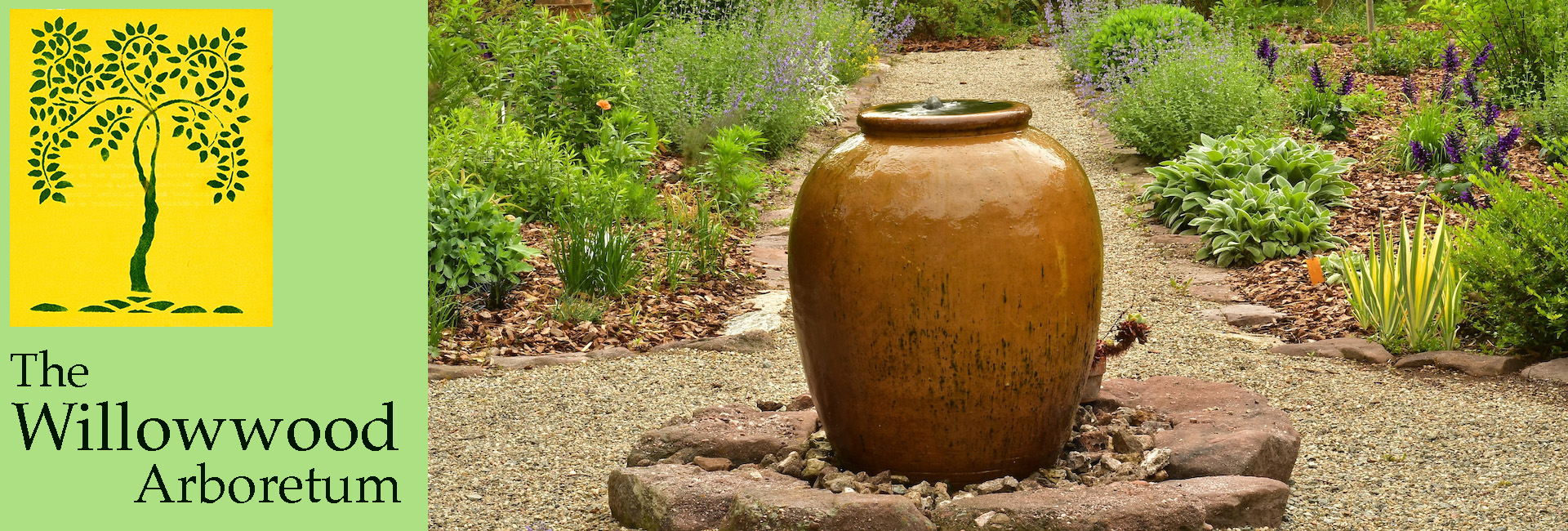As the season comes to an end, we marvel in the unraveling. The trees strip down, revealing their form. The gardeners pull and cut back tired plants from their areas, making way for our seasonal bulb displays. Slowly, the garden heads towards a long sleep.
A few brave species dare to flower now, such as Camellia oleifera, which can be found within Wisley Woods and the Orchard. While their flowers are odorless, they’re abundant and long-lasting, with a flowering time that ranges roughly two months. But flowers aren’t the be-all and end-all of the garden; I find that seed heads can often give more of an impact than flowers. For example, the fluffy seedheads of various Clematis: from the C. virginiana that graces parts of the meadows (photographed here sharing space with a Katsura (Cercidiphyllum japonicum) to the C. tangutica that transforms the nursery fence from utilitarian to whimsical.
Now is a good time to observe what trees do in preparation for the winter. Most go the way of Cotinus obovatus (our beautiful, and massive individual can be seen in Highland Park, adjacent to the lilac collection): a brilliant fall display. Magnolias are setting big, fuzzy buds that will explode into their spicy-fragranced flowers in early spring. Most conifer species are dropping old leaves, but of course leaving the majority. An exception is our state champion dawn redwood, Metasequoia glyptostroboides, which will soon join in the nakedness.
While the Woodwalk is beautiful year-round, it’s a particularly good walking spot at the moment because of the turning Japanese maples, such as ‘Waterfall’. It’s also a favorite spot for our beloved resident barred owl, who continues to oversee the fall clean up.
